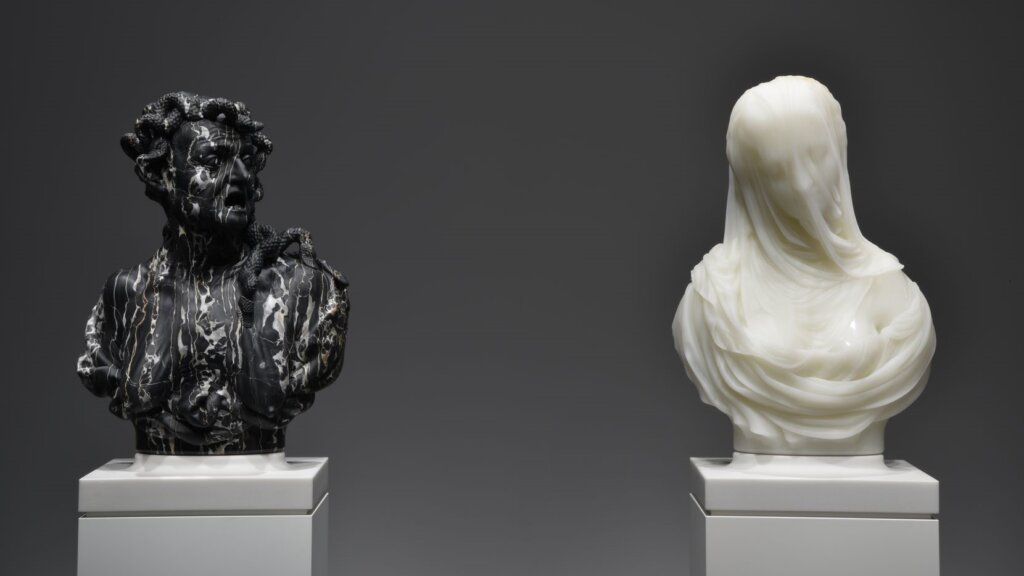Marble has been the cornerstone of sculptural art for centuries. Its luminous surface, potential for intricate detail, and enduring nature have made it a favorite medium for artists from antiquity to the modern day. In this exploration of famous marble sculpture and contemporary marble sculpture, we will traverse through time to observe how this stone has remained a steadfast component of artistic expression.
The Legacy of Marble Sculpture
Marble's legacy in the art world is as enduring as the material itself. Ancient civilizations, including the Greeks and Romans, utilized marble to create sculptures that have stood the test of time. These famous marble sculptures offer a window into history and have become emblematic of their era's artistry and craft.
One cannot speak of marble without acknowledging the mastery of Michelangelo's David, a quintessential example of Renaissance sculpture. This awe-inspiring figure not only exhibits the technical skills of the artist but also marks a pivotal moment in art history where form, beauty, and humanism intersect.
Similarly, the Venus de Milo, though its creator remains unknown, captures the enigmatic allure of ancient Greek sculpture, with her flowing lines and missing arms contributing to her mystique. These historical works set a benchmark for beauty in marble, influencing countless artists and admirers.
The Continuation Into Contemporary Times
Fast forward to contemporary times, and marble continues to be a revered medium. While the classic themes of mythology and idealized human forms are not as dominant today, the stone's elegance and malleability make it a sought-after material for modern artists.
Contemporary marble sculpture often challenges traditional conceptions of form and function. It dialogues with space and context in innovative ways, pushing the boundaries of what marble can represent. Contemporary artists utilize this traditional material to explore abstract concepts, political commentary, or environmental concerns, highlighting the versatility of marble beyond its classical roots.
Artists like Ai Weiwei have used marble to make sociopolitical statements, while others, like Anish Kapoor's non-figurative marble works, play with the material's weight and color to defy expectations, emphasizing shape and space over likeness to nature.
The Techniques: Old and New
Creating sculptures out of marble is labor-intensive, requiring a precise blend of artistic intuition and physical labor. Traditional sculptors relied on chisels and hammers, methods that are still employed today. However, modern techniques have advanced to incorporate digital tools, such as 3D modeling, and machinery like CNC milling, which carve with precision using computer-guided tools.
This technological evolution has opened new realms of possibility for contemporary marble sculpture. Intricate patterns that once took months to achieve by hand can now be executed in a fraction of the time, allowing for greater experimentation and production.
Nevertheless, many contemporary sculptors choose to engage with the painstaking traditional practices, valuing the physical connection between artist and medium. This hands-on approach preserves the intimacy of sculpting, conjoining the creator’s spirit with the veins of the marble.
The Spiritual Connection with Marble
Marble's allure is not solely aesthetic. There is a spiritual and philosophical dimension to this medium that artists have tapped into across ages. The transformation of a rough, obdurate block into a smooth, evocative form speaks to the idea of potentiality and the release of form from matter.
In both famous and contemporary marble sculpture, there is an unspoken dialogue between artist and stone. Michelangelo famously claimed that the statue already existed within the marble; his task was merely to remove the excess. Contemporary artists, too, approach the medium with reverence, engaging in a similar conversation with the material to reveal its hidden narratives.
The Sustainability Question
With environmental consciousness on the rise, the sustainability of marble has come into question. The extraction and transport of marble require significant energy, and the stone's non-renewable nature has urged contemporary artists to consider their ecological footprint.
Some are turning to recycled marble, while others are creating smaller works or using digital exhibitions to minimize physical impacts. These considerations play a crucial role in the narrative of contemporary marble sculpture, highlighting a responsible approach that aligns with current values.
Conclusion: A Stone That Lives On
Marble has stood as the epitome of sculptural excellence, a testament to humanity's quest for beauty and expression. From the famous marble sculptures of yesteryears to the contemporary marble sculptures gracing modern galleries, the medium continues to fascinate and inspire.
While marble's journey from quarry to plinth has evolved with time, its essence remains unchanged. It continues to embody the union of resilience and refinement, offering a platform for artists to mirror the depth of human experience. As we celebrate the rich history of marble in sculpture, we also look forward with eagerness to the innovations yet to be carved from this timeless stone.





Comments